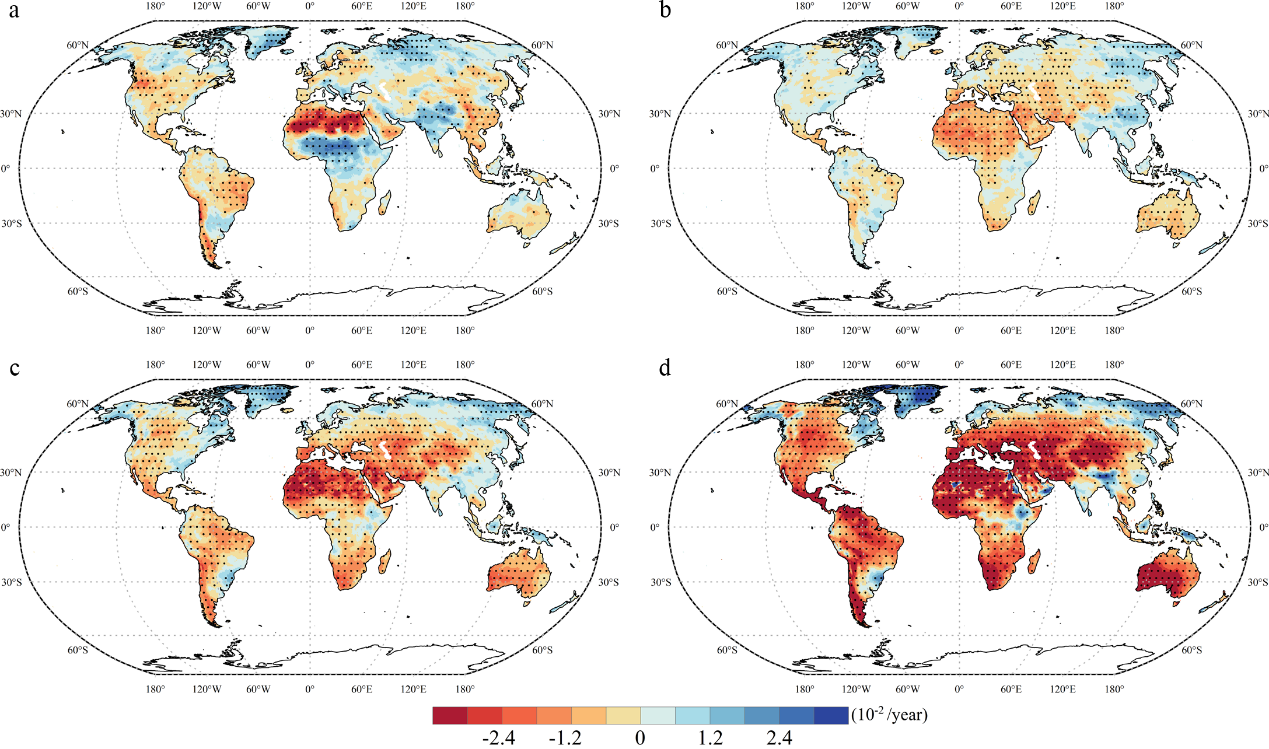Future Meteorological Drought Rrends on Global Land Are Likely to Intensify Further
2021-11-16
With global changes and continuous economic and social development, the intensity and duration of drought and the production, living and ecological problems that may be caused by drought will become more prominent, which has become a hot topic of concern for the international community and many scholars.

Researchers from Xinjiang Institute of Ecology and Geography, Chinese Academy of Sciences, systematically analyzed the future meteorological drought trends, drought event durations, and changes in drought frequency and intensity in the global and Asian dry lands under shared socio-economic pathways (SSPs) with the support of global climate model data from CMIP6.
The results of the study show that under different shared socio-economic pathways, the global terrestrial future is likely to show an increasing trend of drought, with the proportion of drought increasing in the three pathways of SSP126, SSP245 and SSP585 being 36.2%, 53.3% and 68.3%, respectively. Moreover, the duration of drought events becomes longer, with global drought event durations of 4.4 months, 5.7 months, and 8.6 months in the historical period (1961-2000), near future (2021-2060) and far future (2061-2100) time periods, respectively.
Among these, more severe droughts are likely to occur in the future in already dry regions such as Australia, the Middle East, South Africa, North Africa, and Central Asia. Under the SSP126, SSP245 and SSP585 scenarios, the dry regions of Asia along the core of the Silk Road Economic Belt will be at risk of increased drought in the future, with the proportion of drought-intensified areas at 65.1%, 89.9% and 99.8% respectively. At the same time, the intensity and duration of droughts show an increasing trend. In particular, the drought situation in southern Xinjiang, Uzbekistan and western Kazakhstan will be more severe in the future.
The results are presented as "Drylands face potential threat of robust drought in the CMIP6 SSPs scenarios" and "Projected Meteorological Drought over Asian Drylands under Different CMIP6 Scenarios", respectively were published in Environmental Research Letters (https://iopscience.iop.org/article/10.1088/1748-9326/ac2bce) and Remote Sensing (https://www.mdpi.com/2072-4292/13/21/4409/htm).

Fig. 1 Spatial distribution of SPEI Sen's slope for the historical period (a) and three future shared socioeconomic pathways for SSP126 (b), SSP245 (c) and SSP585 (d). Dots indicate that the area passed the Mann-Kendall test of significance (p=0.05).
Contact: LIU Jie, Xinjiang Institute of Ecology and Geography
E-mail: liujie@ms.xjb.ac.cn



